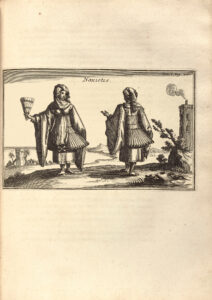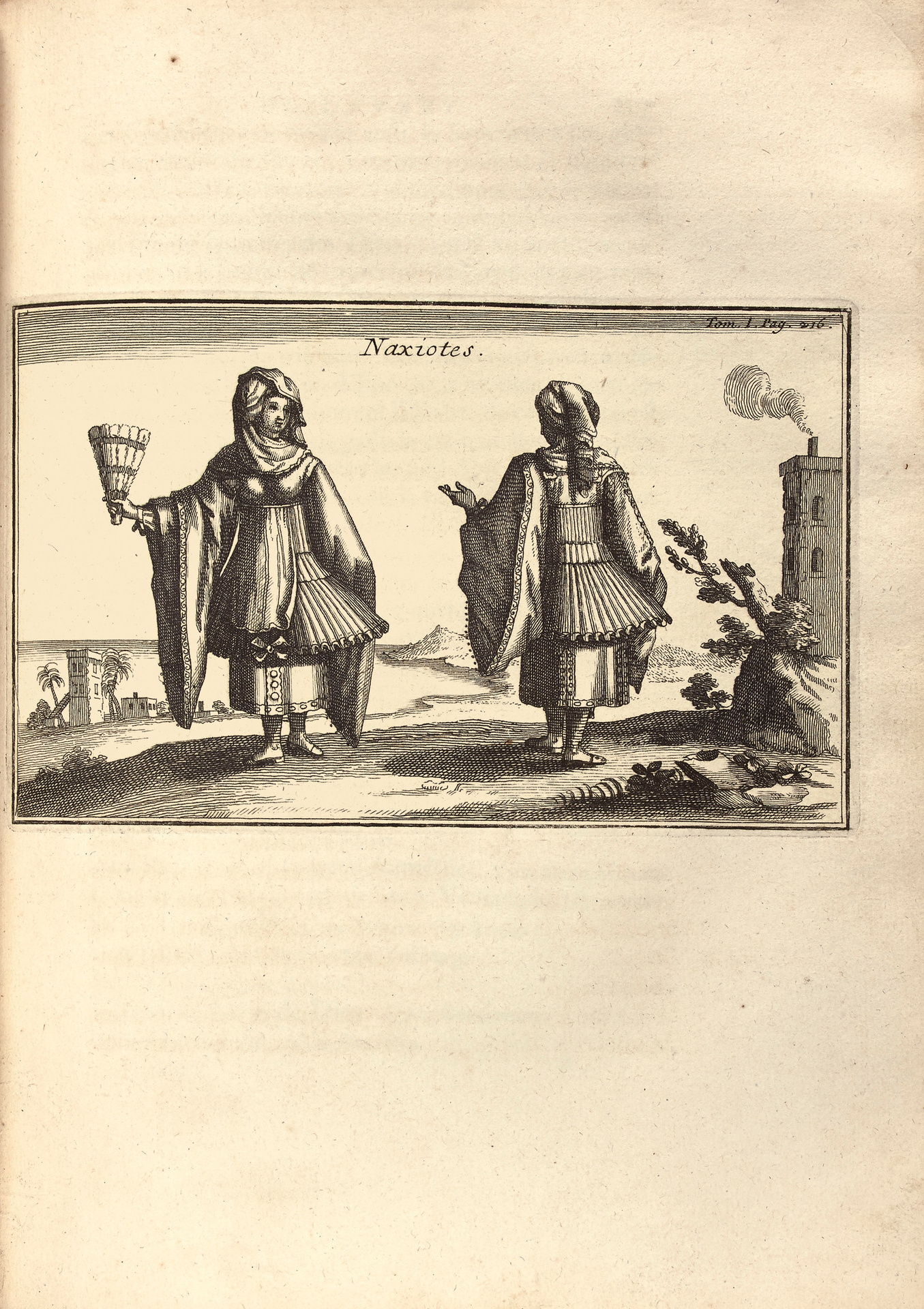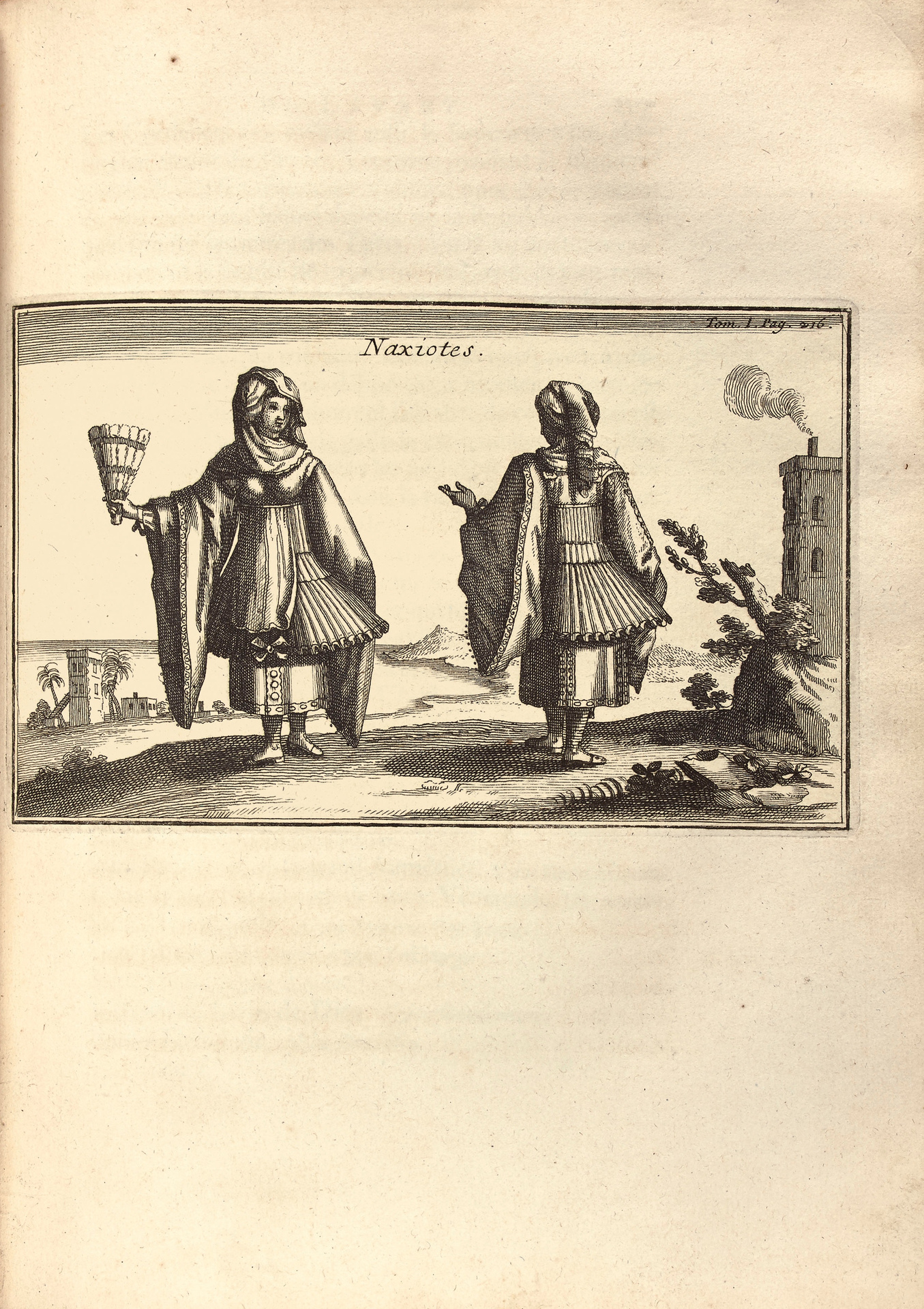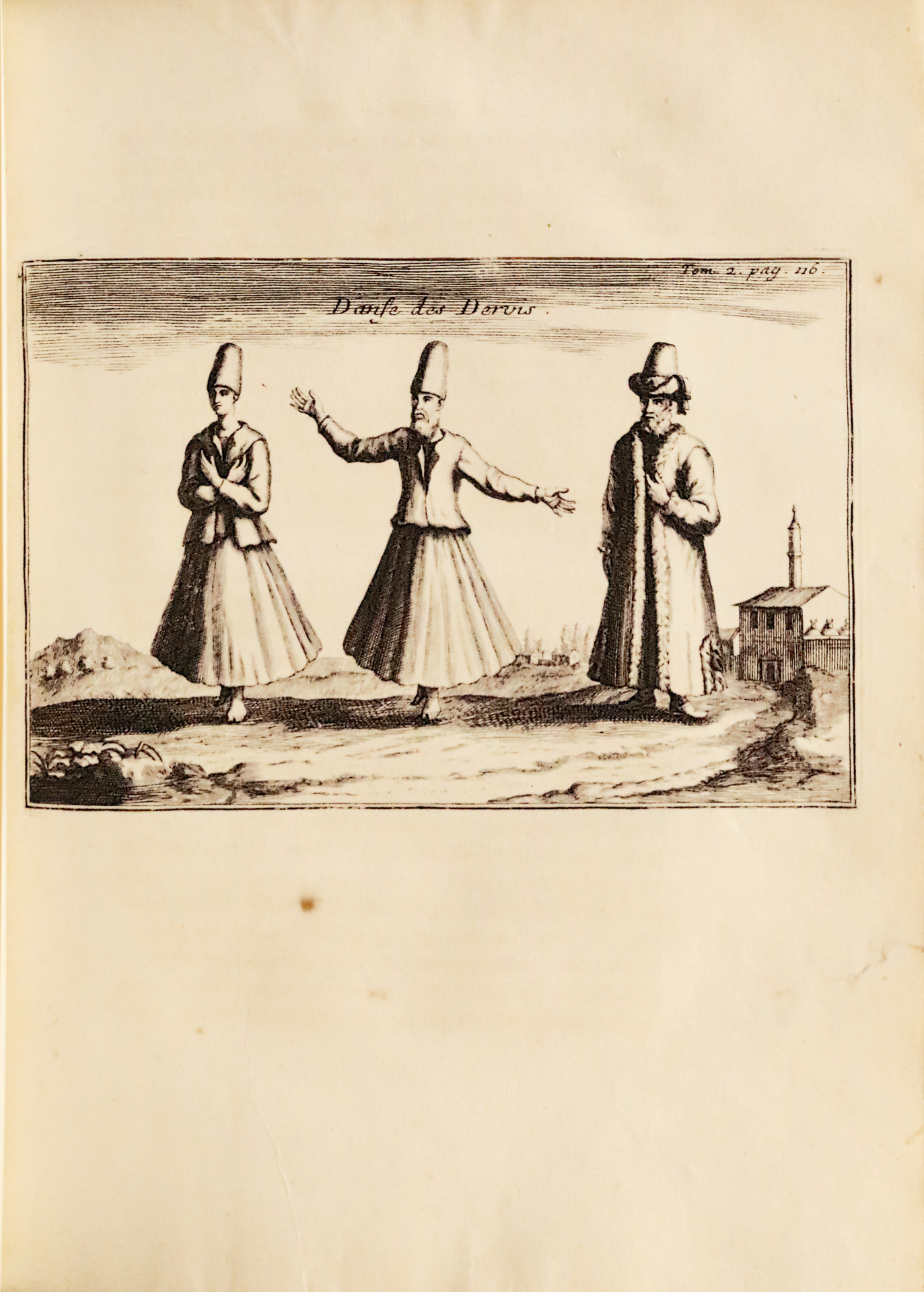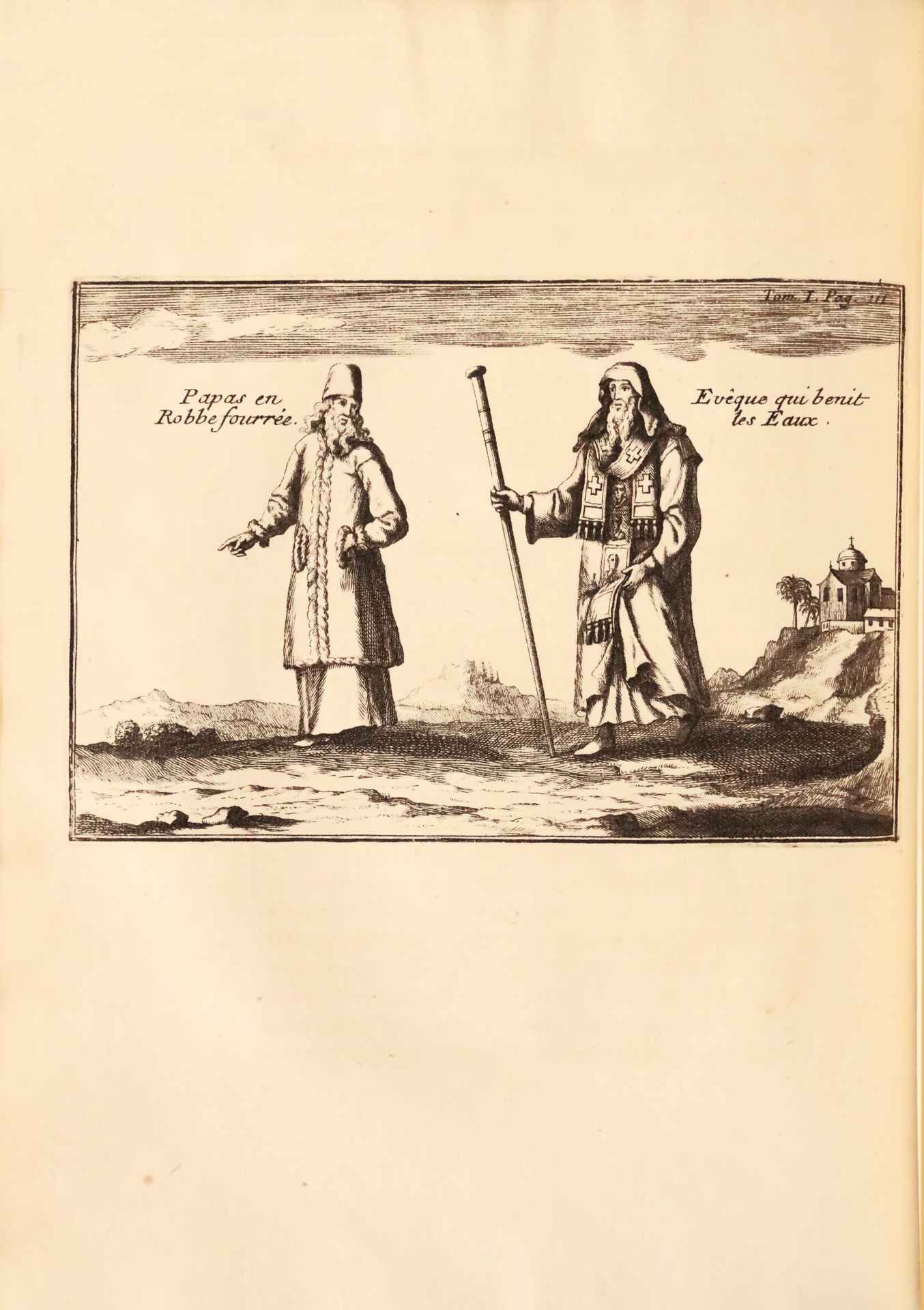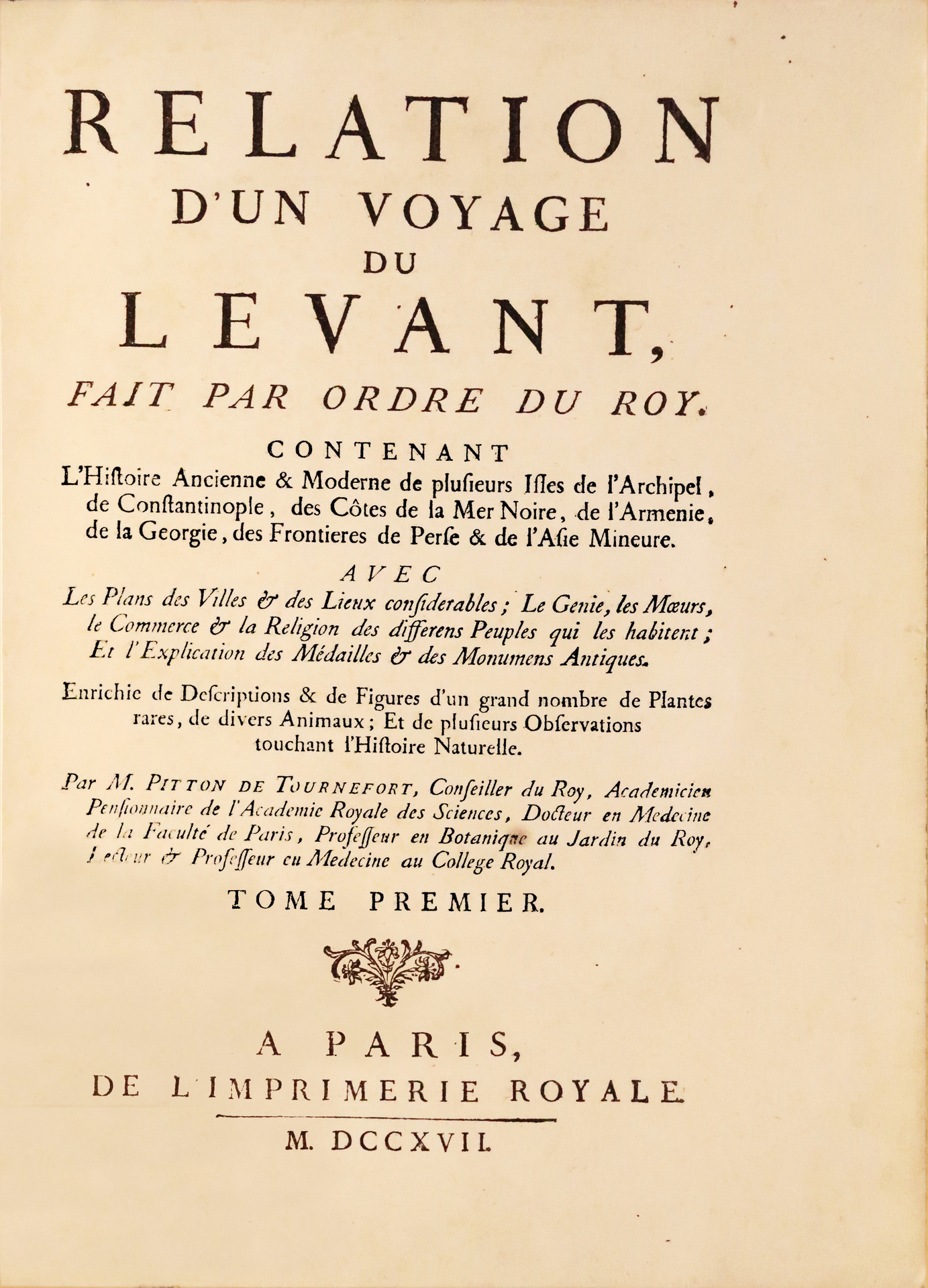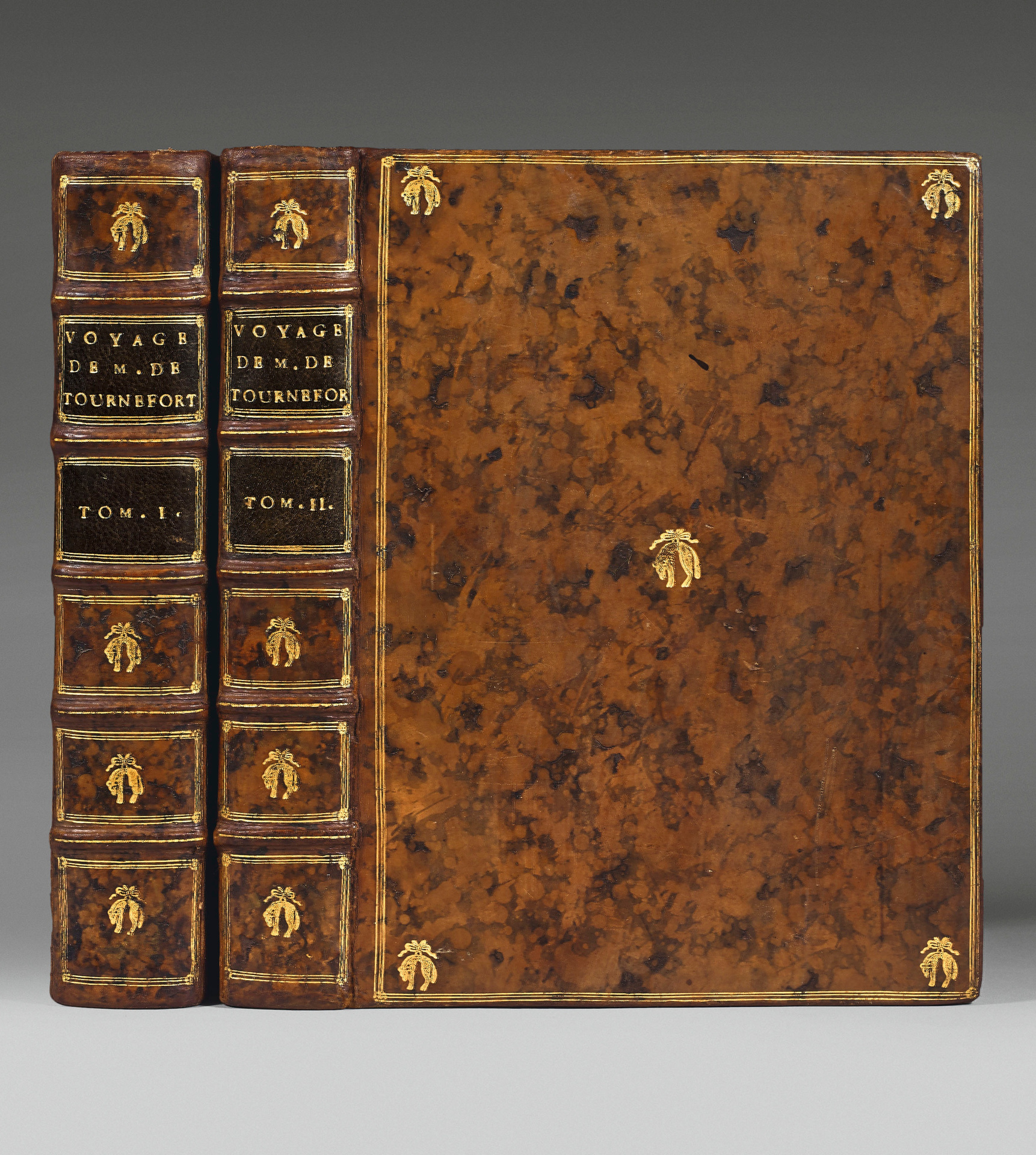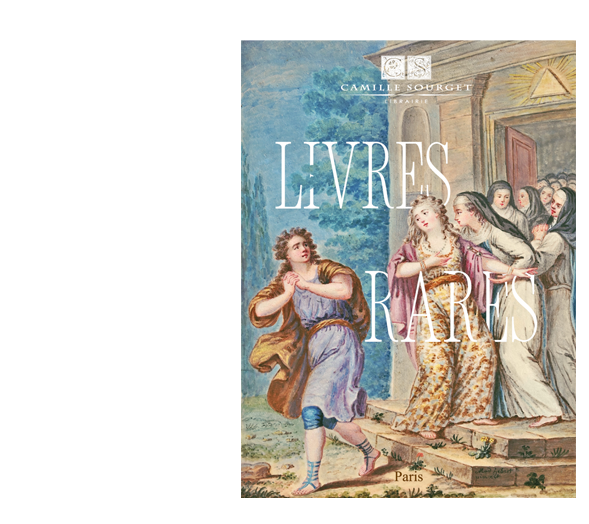Paris, Imprimerie Royale, 1717.
2 parts in 2 volumes 4to [254 x 190 mm] of: I/ (9) ll., 544 pp., 83 full-page plates, 4 double-page plates, brown stain p. 467, waterstain in the margin of pp. 529 to 535; II/ (2) ll., 526 pp., (20) ll., 63 full-page plates and 1 double-page plate. Full marbled calf, triple gilt fillet, emblem of the Golden Fleece in the center and corners of the covers, spines ribbed and decorated with the same emblem repeated in the panels, olive morocco lettering pieces, inner gilt border, gilt over marbled edges. Contemporary binding.
First edition of the “most interesting travel account about the Levant” (Chadenat, 195) printed on the royal press of the Château du Louvre.
This edition illustrated with “many engravings, maps, views, costumes, natural history figures, etc., is the most sought-after and the most beautiful of this curious travel”. (Chadenat).
Pritzel, 321.
Joseph Pitton de Tournefort, famous French botanist (1656-1708) was presented to Louis XIV in 1700, and then received from this Prince the order to go the Levant with the drawer Aubriet and the doctor Gundelsheimer to fulfill a scientific mission. From 1700 to 1702, he successively visited Candia, the Archipelago, Constantinople, the southern coast of the Black Sea, Armenia, Georgia, Mount Arurat, Asia Minor, Angora, Pruse, Smyrna, Ephesus, sent to Paris from the places he visited, zoological, botanical, mineralogical products, took care at the same time of studying antiques, the habits and customs, the commercial productions, and was appointed, on his return, Professor of medicine at the College de France.
The ‘Relation d’un voyage au Levant’, written in the form of letters, is read with great interest and contains a host of extremely curious details on Candia, Constantinople, on the habits and customs of the Turks, etc. The part about Georgia is all the more interesting since this country was only known then by the already old accounts of Chardin and Della-Valle. The tone of the account is simple and pleasant; Tournefort deploys vast scholarship there without ever boring.
The abundant illustration is composed of 151 plates engraved intaglio, including 5 on double-page, drawn by Claude Aubriet.
Among these, 101 are devoted to cityscapes, landscapes, costumes, animals, molluscs,… and 50 to plants.
The number of plates seems to vary from one copy to another, varying between 150 and 152 engravings.
Precious copy bound in contemporary calf for the baron de Longepierre (1659-1721), decorated with the emblem of the Golden Fleece.
Hilaire-Bernard de Roquelyne, baron de Longepierre was born in Dijon in October 1659 and died in Paris on March 31, 1721.
Baron de Longepierre was an Hellenist scholar and playwright, tutor of the Count of Toulouse and of the Duke of Chartres, trusted man of the Regent and friend with the Noailles. Considered as one of the most refined bibliophiles of his time, his strict and refined taste breaks with that of his time.
